Mythical Temple Of Wingded Warrior God Haldi In The ‘City Of The Raven’
Ellen Lloyd - AncientPages.com - Scientists have been searching for an ancient temple dedicated to a winged warrior god Haldi for centuries.
Was the temple just an ancient myth or did it exist in reality?
Now, a dedicated local archaeologist thinks he has finally located this remarkable mythical temple in the "City of the Raven" where it resided. The problem is the ancient ruins are in the middle of a war zone and this piece of ancient history could be destroyed at any time. More than 2,500 years ago, the temple was the shining glory of the ancient capital city of Musarir, also known as Ardini, in modern-day Iraqi Kurdistan.
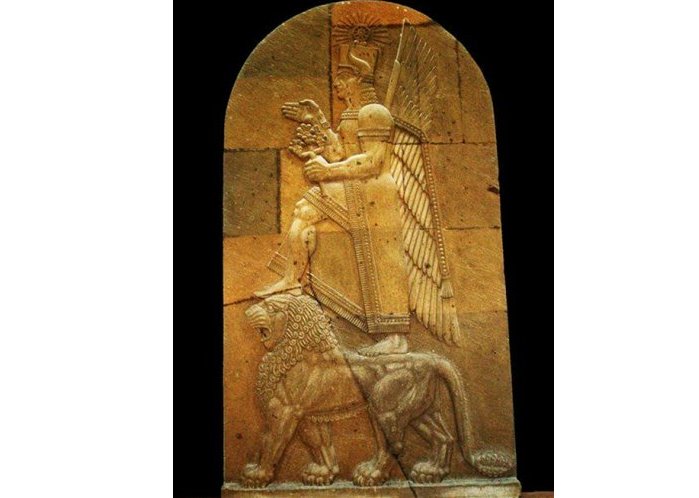
Haldi (Khaldi) was one of the three chief deities of Ararat (Urartu). Of all the gods of the Ararat pantheon, the most inscriptions are dedicated to him. (Image credit: Erebuni Fortress Museum: Yerevan, Armenia)
It is widely believed that the temple was built in the late ninth century BC to honor the god Haldi, a winged warrior standing on a lion, and the goddess Bagbartu in the Iron Age kingdom of Urartu, which considered Haldi its national deity.
In ancient times, Musarir was referred to as the "City of the Raven". This is interpreted by scholars in various ways.
Some think that the raven could be related to Haldi because Mithra was another face of Haldi in the Roman period, and the raven was one of the symbols of Mithra.
There are supposed to be underground temples of Mithra in the Bradost caves. Other archaeologists have proposed City of the Raven got its name because the houses of the city were built on a rocky mountain slope, nesting there like ravens.
The capital city had long been written about, first by an Assyrian king who said it was "the holy city founded in bedrock," then by a later king who referred to the city's ruler as a "mountain dweller," and its own seal called it "the city of the raven."
Marf Zamua, who teaches at Salahaddin University in Erbil, the capital of Iraqi Kurdistan, and is working on his PhD in Assyriology in the Netherlands, began collecting these recently exposed pieces. The 17 column fragments he has found so far have led him to believe he's discovered the long-lost temple of the winged warrior god Haldi. Along with these major finds are a collection of relics, seven stone statues, pottery, and a bronze depiction of a wild goat found in the area.
Zamua went from village to village looking for what had been uncovered. "Most of the objects [were] re-used for their daily life, such as using column bases as stairs and seats and statues as column stones in their houses," he said.
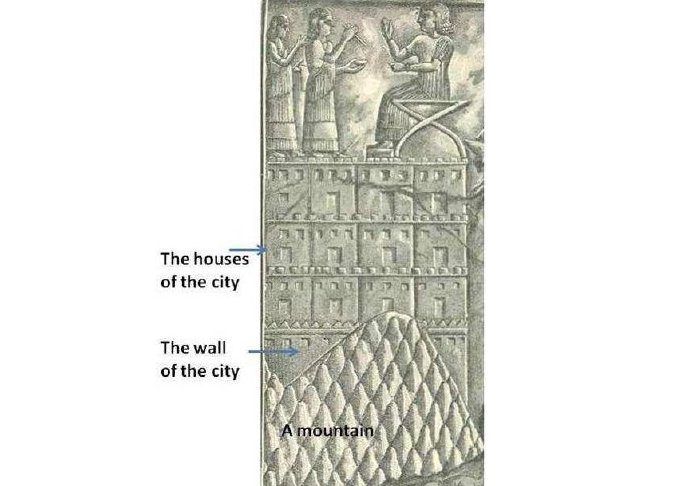
The private houses of the city have been called by some scholars as a fortress on a mountain or temple storage on four levels, or as “a four-storied building”.
He also made a connection between architectural similarities between the modern village and the ancient city-idiosyncrasies in building styles that are uncommon elsewhere in the region, like the lack of outer compound walls and stacked houses.
According to Paul Zimansky, Professor of archaeology and ancient history at Stony Brook University, the general area has been thought to contain the mythic temple for many years. Although he is not yet fully convinced the temple's discovery, he says the bases found "may well belong to some sort of public building of the appropriate time." He calls Marf Zamua's discoveries "a major contribution to the archaeology of this valley."
"I hope he can continue his work in spite of all the political turmoil," Zimansky says. "The remoteness of the area has been both its curse and its blessing throughout history."
The ancient temple is in the middle of a war zone and uncovering ancient treasures in Iraq has posed a huge challenge for excavators.
In the same way, as Sargon II plundered Urartu to fund his war chest, antiquities across Syria and Iraq have been bombed flat and looted by rebels and government forces alike. In Iraq, invading militants of the Islamic State of Iraq and al-Sham have torn through Mosul's museum and are destroying ancient treasures at an alarming rate.
Marf Zamua denounces the pillaging but says the rebels have been targeting Islamic architecture and relics more than pre-Islamic sites. Luckily, the Kurdish army has been successfully protecting the border since the surge, and Marf Zamua says he's unconcerned about the interference with his work-he and the local antiquities department are moving ahead with plans to launch fuller excavations into locations where the objects were found
There is no telling whether the remnants of a mythic temple built to honor a winged man on a lion's back will survive its resurrection.
"They destroy anything they do not like," Marf Zamua says of the modern-day invaders.
Written by - Ellen Lloyd – AncientPages.com
Copyright © AncientPages.com All rights reserved. This material may not be published, broadcast, rewritten or redistributed in whole or part without the express written permission of AncientPages.com
More From Ancient Pages
-
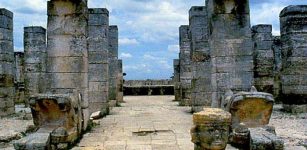 ‘Chac Mool’ – Intriguing Life-Size Figure Carved In Single Stone
Featured Stories | Mar 5, 2016
‘Chac Mool’ – Intriguing Life-Size Figure Carved In Single Stone
Featured Stories | Mar 5, 2016 -
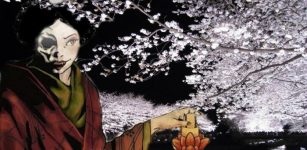 Yokai Hone-Onna (‘Skeleton Woman’): Deceptive Succubus That Feeds On Man’s Soul And Vitality In Japanese Folklore
Featured Stories | Jan 20, 2020
Yokai Hone-Onna (‘Skeleton Woman’): Deceptive Succubus That Feeds On Man’s Soul And Vitality In Japanese Folklore
Featured Stories | Jan 20, 2020 -
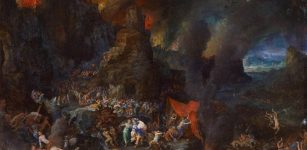 Hades – Land Of The Dead In Greek Beliefs Offered Punishment And Paradise Full Of Harmony
Featured Stories | Aug 15, 2019
Hades – Land Of The Dead In Greek Beliefs Offered Punishment And Paradise Full Of Harmony
Featured Stories | Aug 15, 2019 -
 Which Came First: The Reptile Or The Egg?
Evolution | Jun 12, 2023
Which Came First: The Reptile Or The Egg?
Evolution | Jun 12, 2023 -
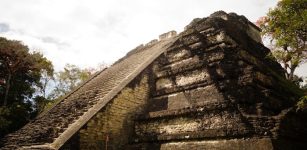 Hundreds Of Ancient Ceremonial Sites Discovered Near Aguada Fénix – The Largest And Oldest Maya Monument In Mexico
Archaeology | Nov 8, 2021
Hundreds Of Ancient Ceremonial Sites Discovered Near Aguada Fénix – The Largest And Oldest Maya Monument In Mexico
Archaeology | Nov 8, 2021 -
 Ancient Mesopotamian City Lagash Reveals More Archaeological Secrets
Archaeology | Jan 25, 2023
Ancient Mesopotamian City Lagash Reveals More Archaeological Secrets
Archaeology | Jan 25, 2023 -
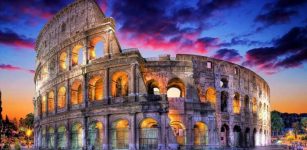 Streets Of Ancient Rome Were Very Dangerous
Ancient History Facts | Feb 29, 2016
Streets Of Ancient Rome Were Very Dangerous
Ancient History Facts | Feb 29, 2016 -
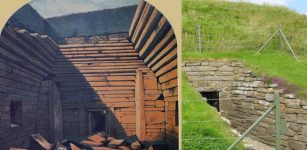 Upside Down Chambers For The Dead Found At Maeshowe, Orkney
Archaeology | Sep 8, 2020
Upside Down Chambers For The Dead Found At Maeshowe, Orkney
Archaeology | Sep 8, 2020 -
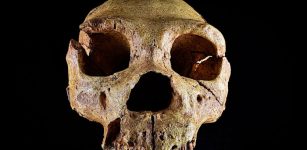 600,000-Year-Old Finds Reveal Canterbury Was Home To Britain’s Earliest Humans
Archaeology | Jun 22, 2022
600,000-Year-Old Finds Reveal Canterbury Was Home To Britain’s Earliest Humans
Archaeology | Jun 22, 2022 -
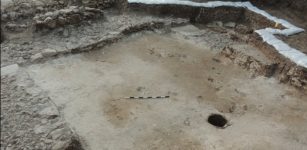 Canaanite Wine Palace At Tel Kabri May Have Been Destroyed By Earthquake
Archaeology | Sep 15, 2020
Canaanite Wine Palace At Tel Kabri May Have Been Destroyed By Earthquake
Archaeology | Sep 15, 2020 -
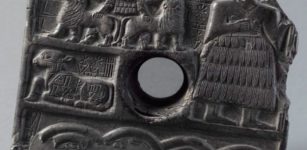 Votive Plaque Dedicated To Dudu High Priest Of God Ningirsu
Artifacts | Jan 16, 2017
Votive Plaque Dedicated To Dudu High Priest Of God Ningirsu
Artifacts | Jan 16, 2017 -
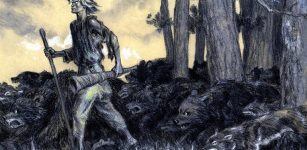 Ilmarinen – Divine Blacksmith And Trusted Friend Of Wizard Vainamoinen In Kalevala
Featured Stories | Nov 16, 2018
Ilmarinen – Divine Blacksmith And Trusted Friend Of Wizard Vainamoinen In Kalevala
Featured Stories | Nov 16, 2018 -
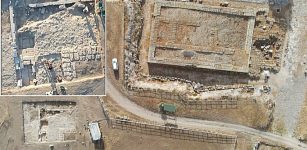 Previously Unknown Monumental Etruscan Temple Found Near The Tempio Grande, Vulci, Latium, Italy
Archaeology | Nov 10, 2022
Previously Unknown Monumental Etruscan Temple Found Near The Tempio Grande, Vulci, Latium, Italy
Archaeology | Nov 10, 2022 -
 Enigmatic Human Fossil Jawbone May Be Evidence Of An Early Homo Sapiens Presence In Europe
Evolution | May 2, 2023
Enigmatic Human Fossil Jawbone May Be Evidence Of An Early Homo Sapiens Presence In Europe
Evolution | May 2, 2023 -
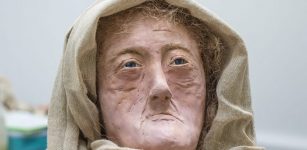 Face Of Iron Age Female Druid Reconstructed
Archaeology | Aug 20, 2019
Face Of Iron Age Female Druid Reconstructed
Archaeology | Aug 20, 2019 -
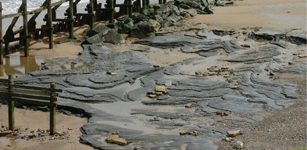 Human Footprints Dating Back 800,000 Years Discovered In Norfolk UK
Archaeology | Feb 7, 2014
Human Footprints Dating Back 800,000 Years Discovered In Norfolk UK
Archaeology | Feb 7, 2014 -
 7,000-Year-Old Underwater Road Discovered In Adriatic Sea Off Korcula Island
Archaeology | May 11, 2023
7,000-Year-Old Underwater Road Discovered In Adriatic Sea Off Korcula Island
Archaeology | May 11, 2023 -
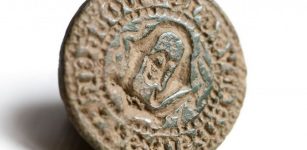 Unique Seal Stamp That Belonged To Elisabeth Buggesdatter, One Of The Most Powerful Women In Denmark – Discovered
Archaeology | Dec 19, 2018
Unique Seal Stamp That Belonged To Elisabeth Buggesdatter, One Of The Most Powerful Women In Denmark – Discovered
Archaeology | Dec 19, 2018 -
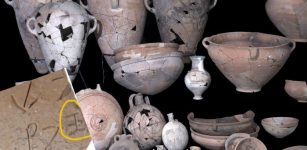 Canaanite Temple Dated To 12th Century BC Unearthed At Lachish, Israel
Archaeology | Feb 19, 2020
Canaanite Temple Dated To 12th Century BC Unearthed At Lachish, Israel
Archaeology | Feb 19, 2020 -
 ‘Bad King John’ Of England: His Lost Treasures Have Never Been Found
Featured Stories | Apr 6, 2016
‘Bad King John’ Of England: His Lost Treasures Have Never Been Found
Featured Stories | Apr 6, 2016




